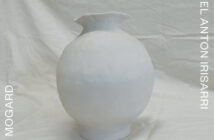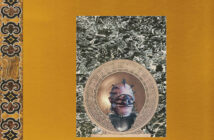
Thomas Köner, known to many as one half of dub techno heroes Porter Ricks, has spoken of the Arctic as “a landscape that is so open yet also so intimate and dangerous, which speaks to your sense of beauty, or your perception of sublime simplicity.” On this latest release, he continues to explore the themes and sounds of Arctic desolation and beauty which found their richest expression to date in his 2012 album Novaya Zemlya. On that album, taking as its thematic inspiration an irradiated and abandoned nuclear testing ground in Northern Russia, all of Köner’s talent and understanding of sound design were brought to bear on a remarkable synaesthetic representation of place and history.
It’s hard not to view this new album in light of the old, and unfortunately this one feels lacking. Both albums are high on concept, as indeed all of Köner’s work is. In this latest piece, Köner takes as his starting point a quote from the Norwegian explorer Friodtjof Jansen, that ‘Love is Life’s Snow.’ The Tiento of the title is a form of piano playing originating in Spain, and this is the first time he has used such an organic instrument in such an untreated way. The album consists of single notes, occasionally chords, played and then allowed to decay naturally into silence, to be succeeded by another note. And that’s more or less all we get, for a continuous hour or so. it is as sparse as they come, undoubtedly evoking vast white spaces, but this sparseness presents some problems.
While Novaya Zemleya was similarly conceptual, that concept was rendered real by sounds which were reminiscent of distant ordnance, Geiger counters, radio feedback., Conceived of another way, those crunches and rumblings could sound tectonic, or mimic the crunching of snow underfoot. The concept manifested itself in the music, and the listener became absorbed into it. So where Novaya Zemleya contained harmonic elements which were, on a basic level, pleasing to listen to, and made the geography real, with Tiento De Las Nieves, because there are so few narrative strands to work with, such a forbiddingly skeletal palette, the music remains to a great extent academic. It is crying out for another component; either internally, in the form of another texture, another element of the arctic to be evoked in the music, or externally, in the form of a video, or a cavernous space in which to be played.
Where the album excels is in its relatively maximalist moments, when the piano playing crystallizes into something approaching a melody. Then, it invites comparison with the best of Ryuichi Sakamoto and Christian Fennesz’s combinations of drone and piano. But whereas those works embraced the warmth and narrative possibilities of the piano, Köner for the most part steadfastly avoids them.
It may seem greedy to demand such warmth from an artist like Köner, but, it being conceived as a meditation on love and snow, it feels strange that Tiento De Las Nieves often feels like his most emotionally distant work. This may be to do with Köner’s belief, expressed in a 2012 interview, that he wanted to avoid using the classical elements of music, like harmony, melody and rhythm. As the man himself said in that interview, “its a dirty job, but someone has to do it.”‘
It’s an admirable stance, and the music created as a result is undoubtedly interesting. I can imagine this piece being much more immersive in a live setting. That it doesn’t transcend the conceptual guidelines Köner set himself is a shame, but it is worth a listen, and it will be interesting to hear how this Tiento project develops over the next few releases.
Neil Mc Nickle



